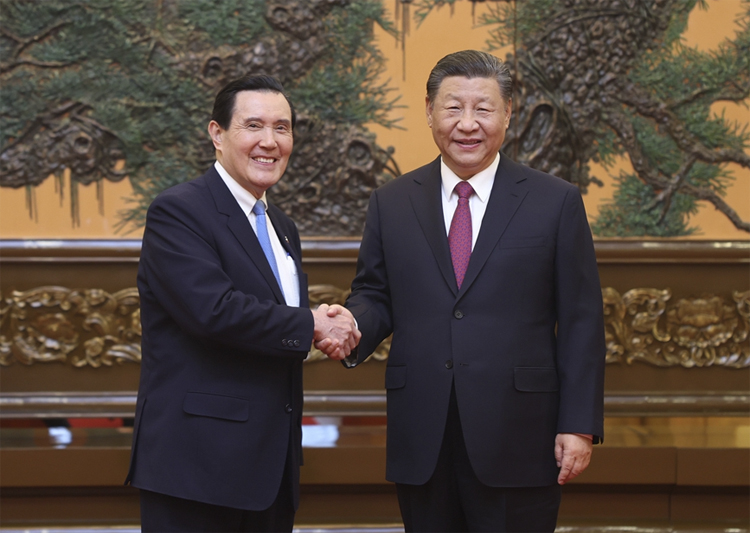April, 17, 2024

Chinese Leader Xi Jinping last week met fellow Chinese Ma Ying-jeou. During the meeting President Xi expressed grief over the loss of lives in the earthquake in Hualien & extended his sympathies to the fellow Chinese affected. He spoke of the 5000 year history of the Great Chinese Empire & the historic bonds between the Compatriots from both sides of the Taiwan Straits (Ref Chinese media). They include bonds such as the Buddhist philosophy & worshiping of the ‘Mazu’ goddess among many other cultural relations as one nation. China is the only permanent member of the UN Security Council with the ‘One Country Many Systems’ method of government. So far others in the UNSC haven’t practiced the system though they preach democracy. It may be a sign of weakness on their part. He called on Chinese youth with same bloodlines to keep the Chinese nation together without falling into the traps to weaken China (Ref. Chinese media). The Chinese from all corners (including Hong Kong, Macau, Taiwan & even Hainan) are making new trails along the Belt & Road while vanishing the trails of division marked by invaders during the colonization.
One China faced aggressors.
In December 1937 Imperial Japanese troops captured Nanjing in China & within 06 weeks killed approx 300,000 Chinese civilians & unarmed soldiers. It is one of the most barbaric episodes of WW II. Though some states colonized parts of China none managed to surrender the civilization. The Chinese faced the aggressions as one united empire. Relatives of victims of the Nanjing Massacre, survivors & descendants of survivors etc. gathered on 3rd April at the Memorial Hall of the Victims in Nanjing Massacre to pay tribute to those who lost their lives 87 years ago (Ref. Chinese media).
Lessons for Sri Lanka.
When the Chinese reduced international trade by late 1400s, European markets weakened. Thus the Portuguese sailed searching for Spices, Silk & Gems etc. They came to Galle before reaching China in 1505 for trading. However, instead of facing them as one nation, conflict prone Sri Lankans started yet another conflict in 1520s with the ‘Vijayaba Kollaya’ dividing the Kotte kingdom where Jayawardenepura (built with support from the Chinese navy) was the Capital.
After some Sri Lankan fractions got Lisbon fire power as backup to fight against others, Lisbon used the conflict to further divide Sri Lankans & rule the coast. The Dutch & the British continued & by 1930s the imperialists started their second fight (WWII) to divide the globe for their prosperity. As a result though not brutal as in Nanjing, the Japanese raided SL on 5th April 1942 (Easter Sunday) & even bombed the ‘Mulleriyawa’ Mental Hospital. However, after the end of WWII, British returned SL to the conflict loving locals. Once again Sri Lankans practiced their old conflicting skills in 1956 & 71 etc. They violently conflicted for 30 years & ended it on 19th May 2009. After a short break, they resumed their explosions during the Sirisena rule on 21st April 2019 (Easter Sunday).
Sri Lankans can learn from China on how to;
It is high time for Sri Lankans at least to educate the next generation to give up conflicting attitudes/ behaviours.
(Views expressed are personal).
Video Story